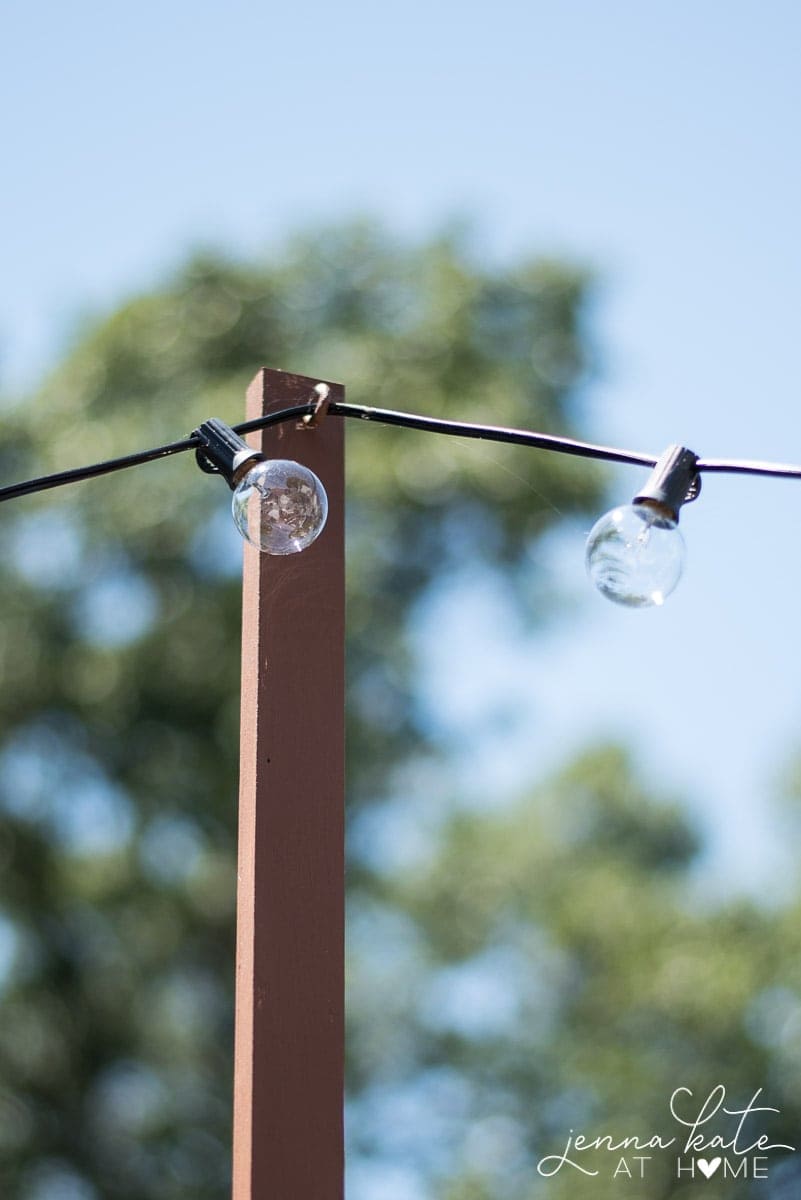Content may contain affiliate links. When you shop the links, I receive a small commission at no cost to you. Thank you for supporting my small business.
Add color and style to your outdoor spaces this summer with these beautiful planter ideas that feature plants and colorful flowers that will thrive in a variety of conditions.
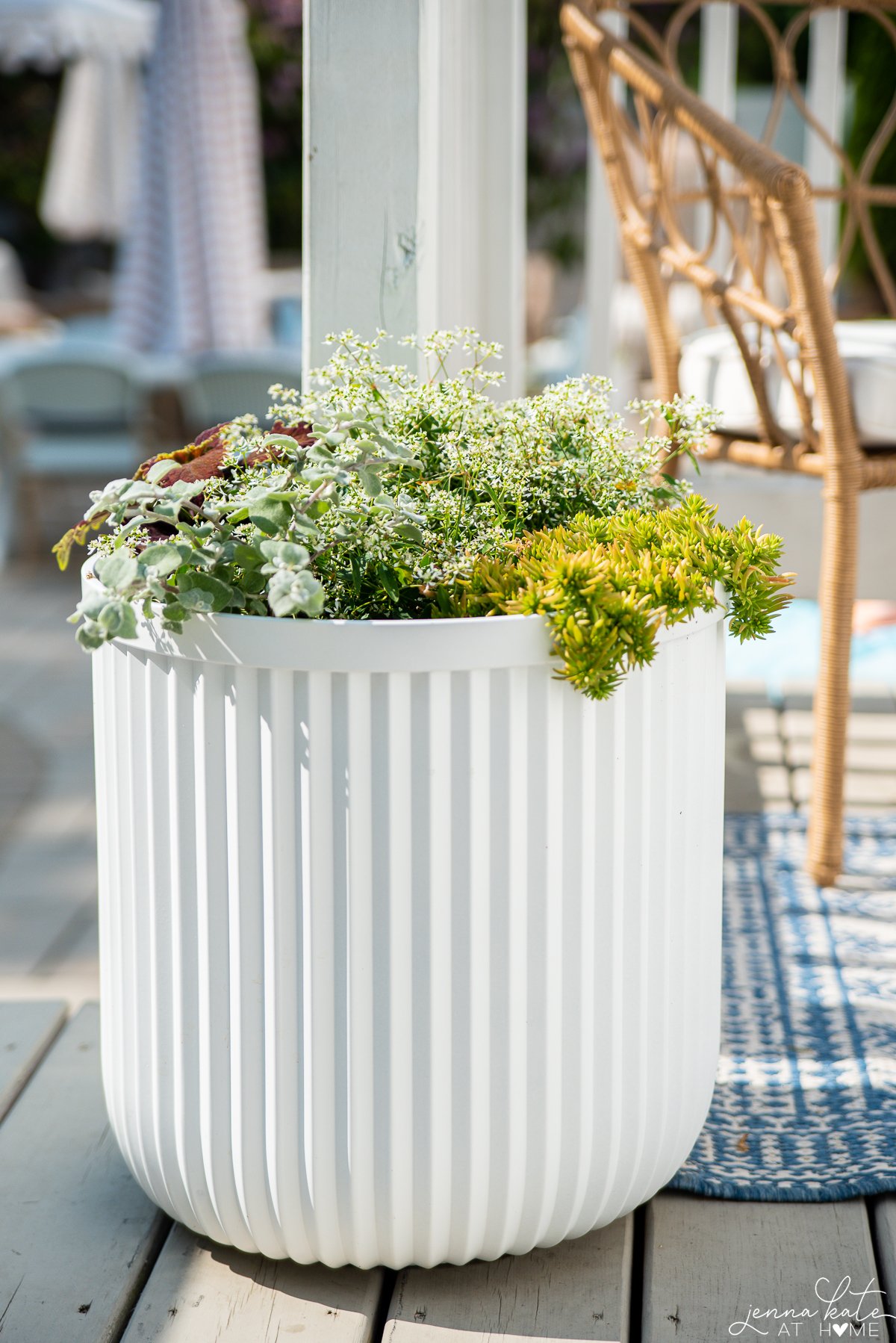
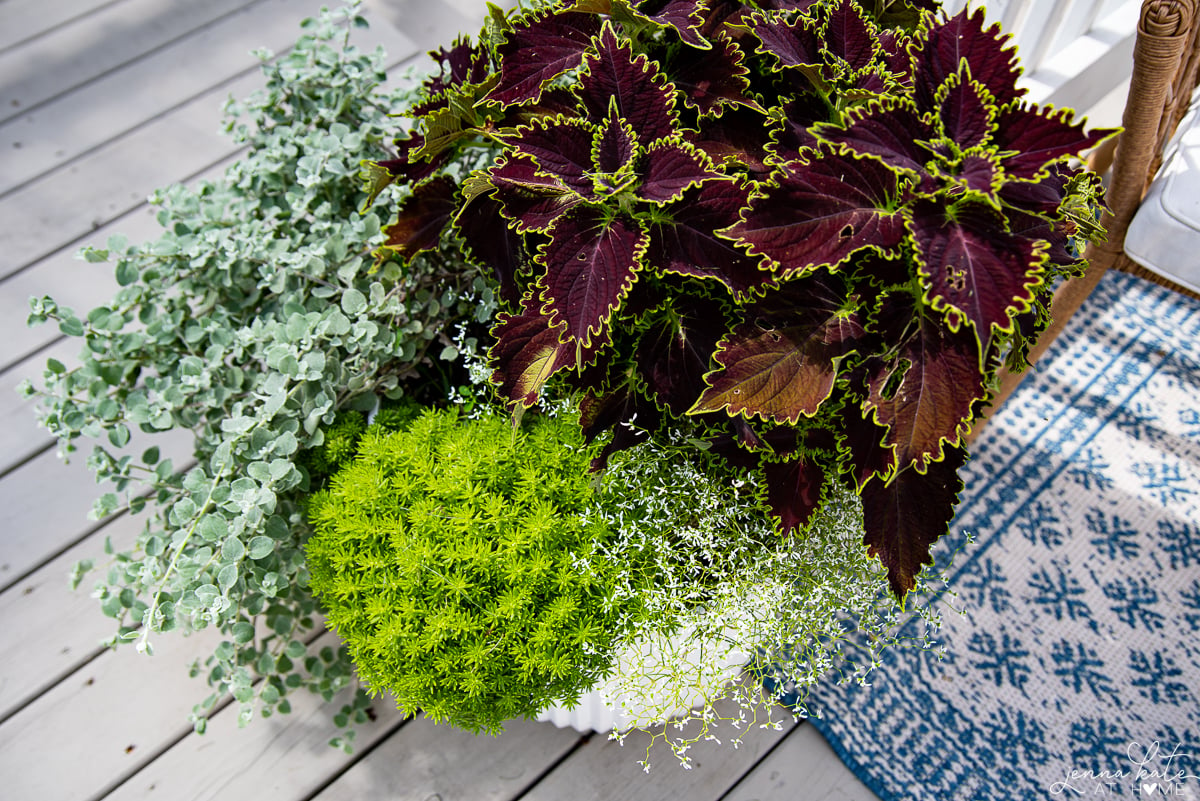
As summer approaches, you might be looking for creative ways to brighten up your outdoor living spaces. A great way to add color and life to your patio, front porch, or garden is by experimenting with summer planter ideas. With the right combination of plants, textures, and colors, you can create eye-catching container gardens that will thrive throughout the warm months.
If you’re new to container gardening, it can seem daunting. You don’t want to spend a fortune on a bunch of beautiful plants, only for them to die within weeks. But don’t worry, I’ve made all the mistakes in the past so that you don’t have to! Once you understand the light your outdoor space gets, picking the right plants for your planters will be a breeze.
Choosing Containers
When considering the best plants for your planters this summer, the type of container you choose can make a big difference in the overall appearance and success of your plants. There are a few different options to choose from, depending on where you’re looking to add some summer color.

Large Planters
Large planters can make a bold statement in your garden, and can be used as a focal point or in groupings throughout your outdoor space.
When choosing a large planter, consider both its material and design. Resin planters are lightweight and weather-resistant options, while Terracotta or ceramic planters offer a more traditional look.
Ensure the planter has good drainage, as excess water will rot the roots of the plants.

In terms of plants, bigger containers can accommodate larger or multiple plants, but try to stick to the “thriller-filler-spiller” formula. This involves using a tall, eye-catching plant in the center (thriller), surrounding it with bushy or mounded plants (filler), and finishing with trailing plants that cascade over the edge of the planter (spiller).

Using plants that require roughly the the same light and moisture requirement will ensure a healthy and stunning container garden.

Tip: Use Those Empty Flats!
To save on using a ton of potting mix (and making the planters crazy heavy!), I like to put some of the empty plant containers at the bottom of the large planters, before topping with potting mix.

Window Boxes
Window boxes are an easy way to bring color and life to the front of your home, especially when you’re dealing with small spaces. Window boxes obviously are meant to hang in front of windows, but you can also get ones that hang over a railing, which is perfect for a deck or balcony.

When selecting a window box, you’ll want to ensure that it has proper drainage and is a suitable size for your chosen plants. Waterproof window boxes lined with coco fiber are a popular option, as they provide a natural look and excellent drainage. Just make sure to secure your window box to your home safely and securely before adding plants.
When deciding how to plant your window box, think about using a mix of trailing plants, like petunias, and upright plants, such as dwarf dahlias or geraniums, to create an eye-catching display.
Hanging Baskets
Hanging baskets are another excellent container choice, adding vertical interest to your outdoor space. They can be hung from porches, fences or railings.
When shopping for hanging baskets, look for those with built-in reservoirs to help retain moisture, as these containers can dry out quickly in the hot summer sun.
Consider using a variety of different plant types to create interesting texture and color combinations. For example, you could include a mix of trailing plants like ivy, cascading flowers like lobelia, and taller plants like snapdragons for height.
Creating Container Gardens
Thriller, Filler, Spiller Formula

When creating container gardens for summer, you can rely on the tried-and-true Thriller, Filler, Spiller formula. This technique helps you put together visually appealing plant arrangements:
- Thriller: Start with a show-stopping tall plant to grab attention. Good examples for your thriller plant include tall grasses, cannas, and salvia.
- Filler: Surround the thriller with medium-sized plants to fill in the space. Consider using round or bushy plants like petunias (always a good option), begonias, or coleus.
- Spiller: Finally, let some plants elegantly spill over the edge of the container. Trailing plants like ivy and sweet potato vine work well as spillers.

Color Schemes
A well-thought-out color scheme can transform your summer container garden, just like it does for interior design. Here are a few ideas to consider for a cohesive look:
- Monochromatic: Create a sophisticated look by using plants with different shades of the same color, such as pink, purple, or white. These monochromatic color palettes will never look boring when you vary the textures, as different-sized flowers and different types of green foliage will add visual interest.
- Complementary: Combine colors that are opposite each other on the color wheel, like yellow and purple or orange and blue, to create a vibrant and eye-catching display.
- Harmonious: Go for a calming effect by using neighboring colors on the color wheel, like shades of green and blue or red and orange.
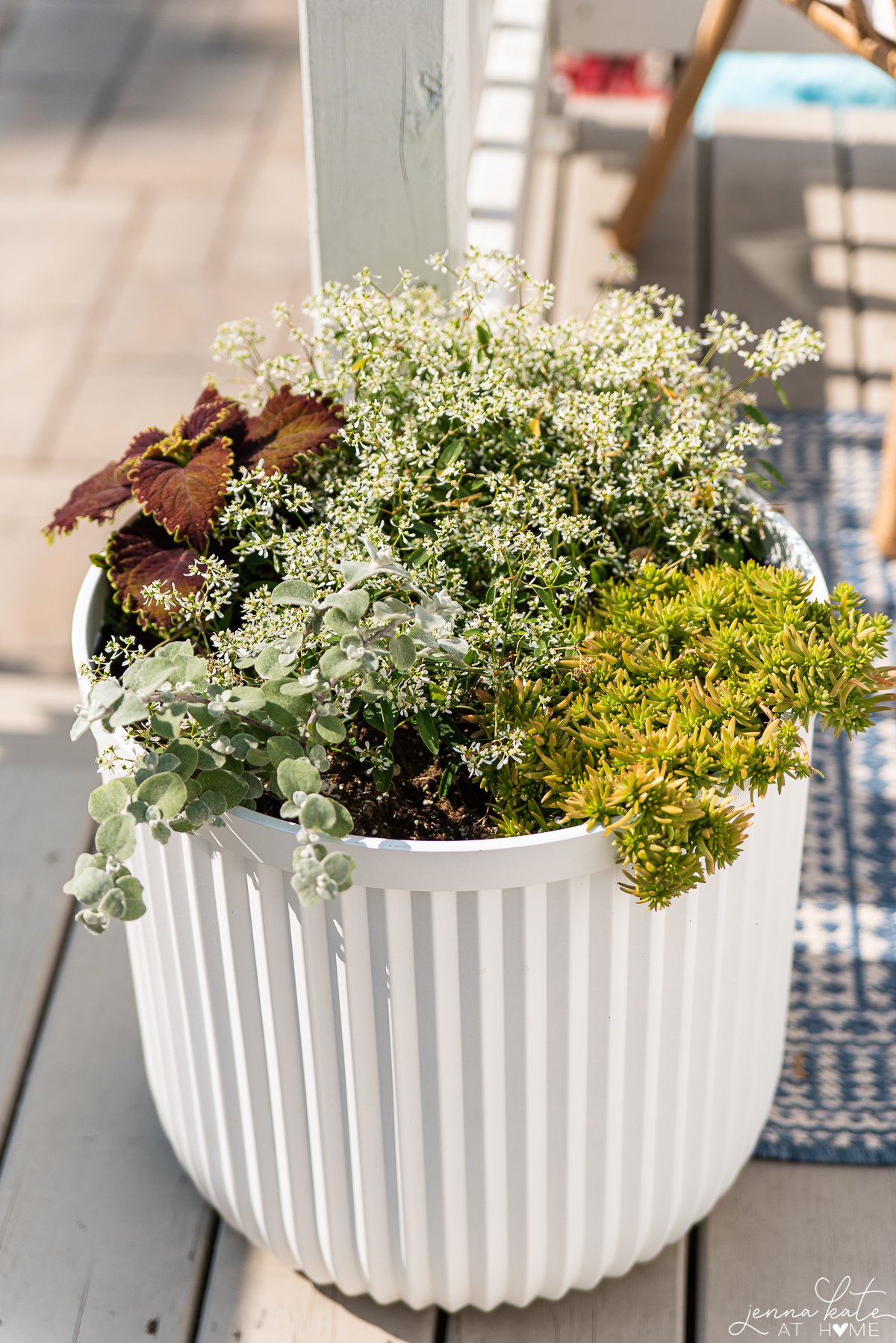
Just like your wardrobe and home decorating style, your choice of plants and colors should reflect your personal style and complement your existing landscape and outdoor elements.

Choosing The Right Plants
Whether you have a sunny spot or a shady corner, you can create a stunning display this summer. There are so many different plants to choose from for each lighting condition. All the plants I’m sharing are also low maintenance and just require some basic deadheading and regularly watering during the growing season.

Here are a variety of plants that have worked well for me over the years…

Full Sun Plants
For those areas in your garden that receive plenty of direct sunlight, consider planting some of these full sun-loving bloomers:
- Petunias (the most popular choice because they are so easy to grow and fill out so well)
- Sunpatiens
- Sweet Potato Vine
- Calibrachoa
- Zinnia
- Lantana
- Angelonia
- Geraniums
- Snapdragons
- Hibiscus
- Lemon Coral Sedum
- Bacopa
- New Guinea Impatiens
Part-Sun / Partial Shade Plants
Not every spot in your garden receives full sun, and that’s okay. There are plenty of flowers and plants that can thrive in part-sun conditions. Most of these plants prefer morning sun and afternoon shade:
- Allysum
- Impatiens
- Bacopa
- Begonia
- Diamond Frost Euphorbia
- Coleus
- Creeping Jenny
- Caladium
- Ivy


Shade Plants
Don’t worry if your container placement has limited sunlight; there is a diverse range of plants that will grow well in the shade. Here are a couple of shade-loving options for your summer planters:
- Fern
- Heuchera, Coral Bells
- Hydrangea
- Fucshia
- Caladium
- Begonia
- Impatiens
- Ivy
Container gardening isn’t limited to flowers – planting edible plants like herbs is a great idea, too!
If you’re looking to bring some plants indoors, these shade plants look beautiful on a screened-in porch or sunroom. I also have an entire article dedicated to other screened in porch ideas that you’ll love.
When to Plant
It’s safe to plant once the chance of frost is gone, so here in Boston that usually means early spring. You can always cover the planters overnight if there’s a risk of frost.
Care
Caring for your summer planters is essential to keep them looking vibrant and healthy throughout the season. In this section, we’ll cover the basics of caring for your plants, with a focus on fertilizing, watering, and deadheading. By following these steps, you’ll be well on your way to maintaining beautiful planters all summer long.

Fertilizing
Fertilizing your containers is key to providing your plants the nutrients they need to thrive. Here are some tips to help you fertilize your summer planters effectively:
- Start by choosing the right fertilizer. Consider using a slow-release granular fertilizer or a water-soluble one specifically designed for container plants.
- Follow the package directions regarding the frequency and amount of fertilizer to apply. Over-fertilizing can do more harm than good.
- Incorporate the fertilizer into the container’s soil when planting or sprinkle it on top and mix it in as needed.
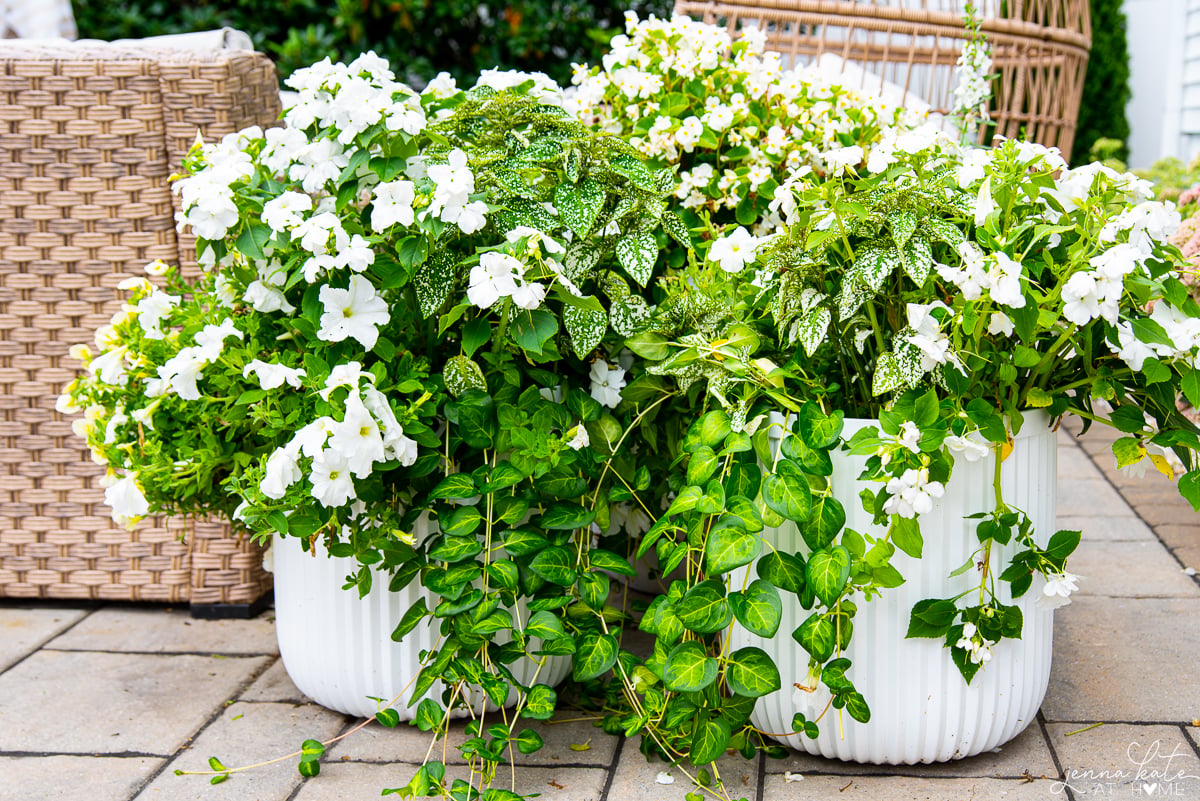
Watering
Proper watering is crucial to maintaining healthy plants. Here’s how to water your summer planters effectively:
- Ensure your containers have drainage holes to prevent waterlogging and root rot.
- When watering, give your plants a thorough soak, allowing the water to drain through the bottom.
- Allow the top inch or two of soil to dry between waterings to prevent over-watering.
- Keep in mind that drought-tolerant plants like succulents require less frequent watering.
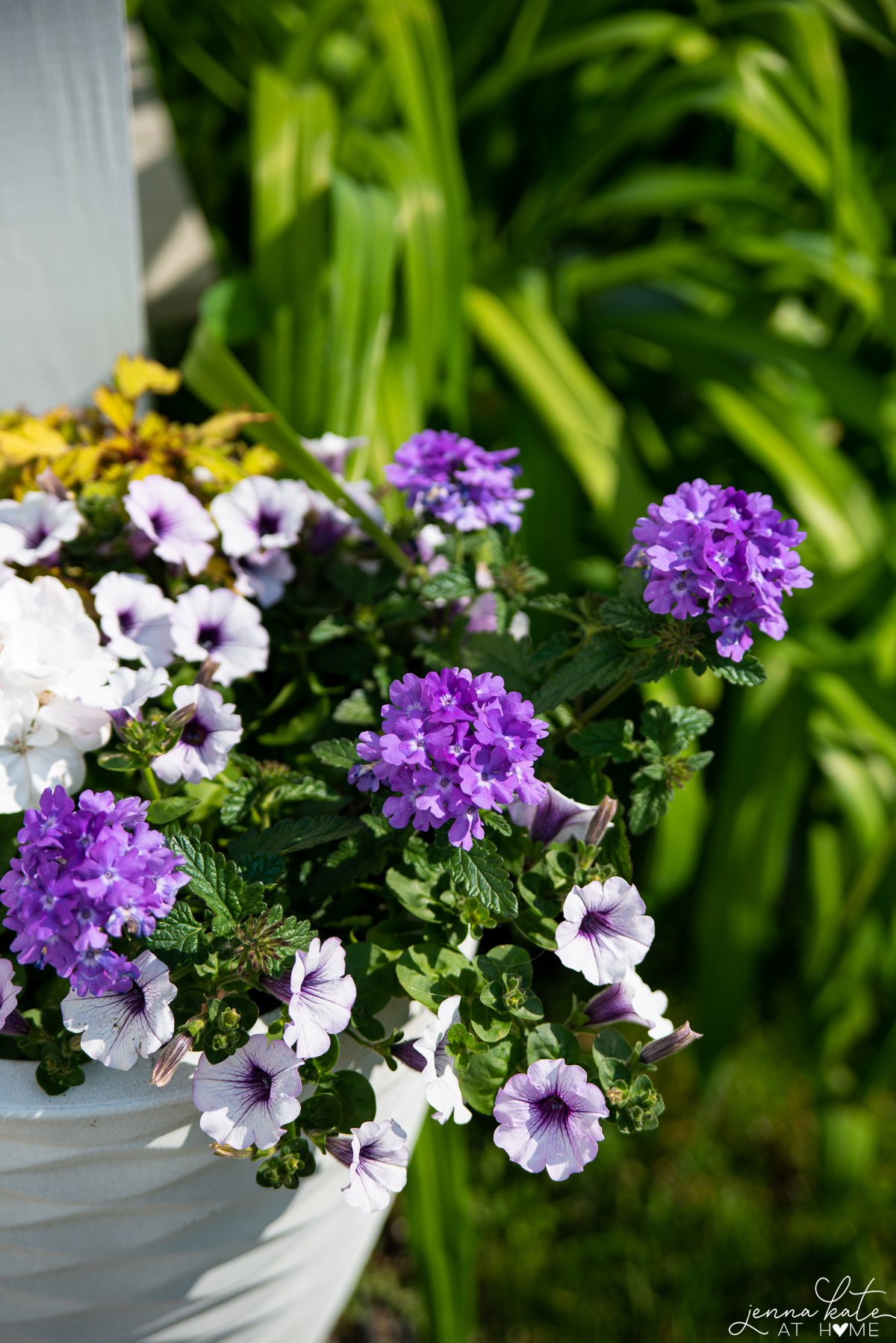
Deadheading
Regularly removing spent blooms, or deadheading, can keep your plants looking fresh and encourage more flowering. Here’s how to deadhead your container plants:
- With clean, sharp pruners or scissors, snip off the spent blooms just below the flower head. Be careful not to damage the leaves or healthy growth nearby.
- For plants with many small flowers, like cosmos or nicotiana, use your thumb and forefinger to pinch off spent blooms.
- Stay vigilant for dead or yellow leaves, and remove them as necessary to maintain your plant’s appearance.
By regularly fertilizing, watering, and deadheading your summer planters, you’ll be able to maintain beautiful and healthy plants all season long. Your curb appeal will on-point thanks to all the different colors, and your backyard will be the perfect oasis for you to relax and enjoy a splash of color.







